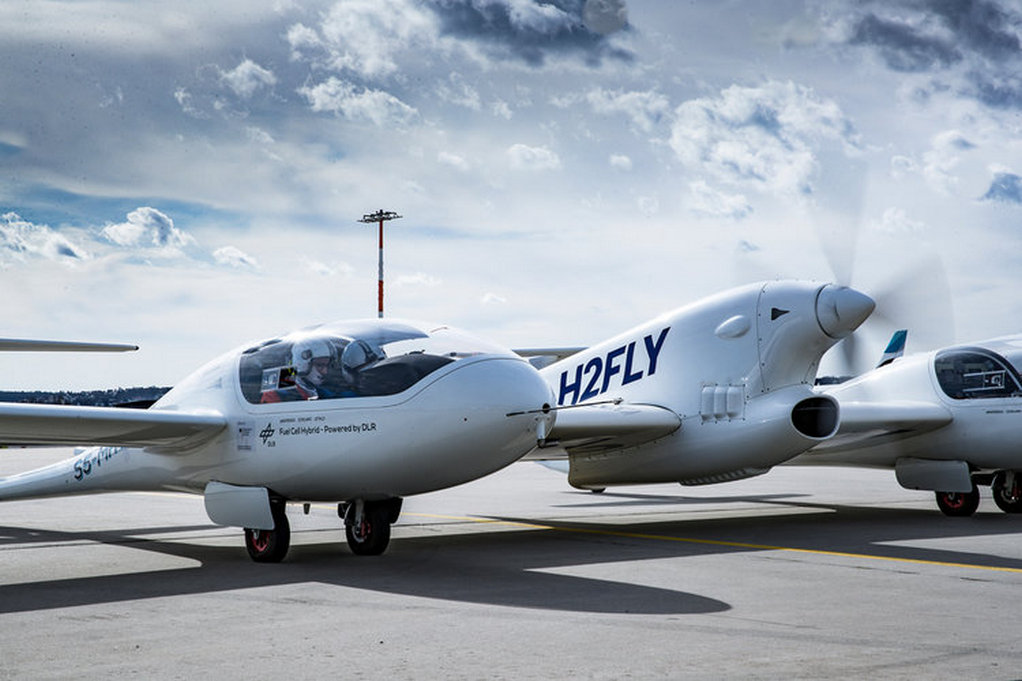H2Fly has successfully tested the ground-based cryogenic fuel-filling procedure that’ll power groundbreaking liquid hydrogen aircraft flights in the coming months. Liquid H2 will be an absolute game-changer, allowing clean long-distance air travel.
Replacing the rich energy source of Jet-A kerosene with a zero-carbon alternative is no easy task for the aviation industry. There are “sustainable aviation fuels” made with captured carbon, but in order to go zero-emissions, what works for cars and trucks isn’t gonna cut it – batteries are too heavy, hydrogen gas takes up way too much space. Intercontinental green aviation looks most likely at this point to begin using liquid hydrogen.
By weight, hydrogen carries some 2.8 times the energy of today’s liquid fuels. But even when you cryogenically cool it into a liquid, it takes up a lot of physical space – about 3.7 times more than jet fuel. So it’s light but bulky – and some of that weight saving disappears once you start looking at a full system – after all, hydrogen only stays a liquid if you keep it below 20 Kelvin (-253 °C /-423.4 °F).
Thus, it’s a giant pain to work with – which is why, other than some secret military work in the mid-1900s, the vast majority of new hydrogen aviation enterprises have studied it, bookmarked it and got on with making their planes work on gaseous hydrogen instead. There’s more than enough work to be done proving the rest of these systems, from fuel cells and storage to electric propulsion, are certifiably safe and ready for prime time without having to deal with a cryogenic liquid even Lockheed’s Skunkworks couldn’t handle.
Stuttgart’s H2Fly, though, is ripping right into it. Having already made the first manned, purely hydrogen-powered flight back in 2009, and more recently having done pioneering work with a gaseous hydrogen system built into a twin-fuselage Pipistrel Taurus G4, the company has now fitted the same HY4 plane with a liquid storage system from Air Liquide, and is hoping to lead the charge back into the skies with liquid H2.
The company has already done extended vibration and leaking testing on the cryogenic tank, which sits alone in the left fuselage, well isolated from the pilot in the right fuselage.
Indeed, if the HY4 takes off this summer as planned, it’ll be the world’s first manned flight of a liquid hydrogen-powered passenger aircraft. This is pioneering work of great consequence to the green transition.
Tags: H2Fly, Jet-A Kerosene, Liquid H2, Za, ZeroCarbon



Recent Posts
FueLNG Completes 400th LNG Ship-to-Ship Bunkering Operation in Singapore
Port of Gothenburg Hosts First Bunkering of Swedish-Produced Biomethane for Maritime Sector
UrbanLink Expands REGENT Seaglider Order, Driving Forward Zero-Emission Coastal Travel in Florida and Puerto Rico
HD Hyundai Executive Vice Chairman Holds Landmark Talks with U.S. Trade Representative on Shipbuilding Cooperation
ZeroNorth and Veracity by DNV launch end-to-end emissions reporting and verification service for the maritime industry
Hapag-Lloyd Expands ‘Hamburg Express’ Class Fleet with Delivery of Genova Express
Bureau Veritas calls for standardized safety regulations to accelerate adoption of electrification technology
ABS Publishes Safety Insights for Ammonia as a Marine Fuel